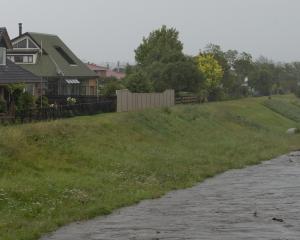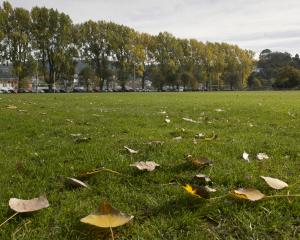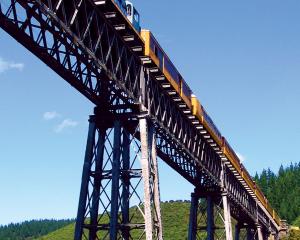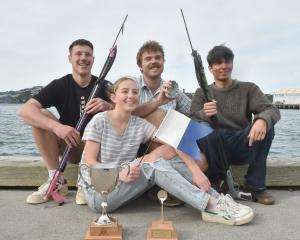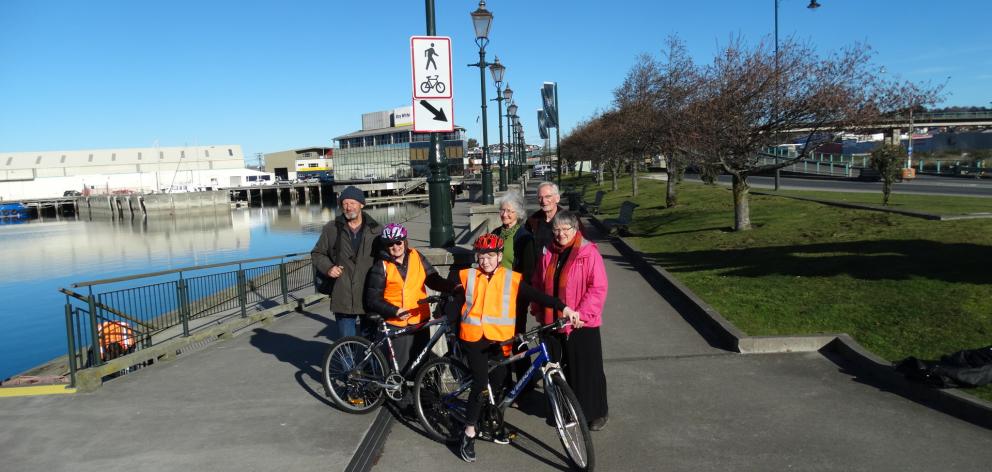
A Dunedin advocacy group for visually impaired people is calling for separate pathways for walkers and cyclists at the harbourside.
The call was made by the Visual Impairment Charitable Trust Aotearoa (Victa) last week in a submission on the Dunedin City Council’s proposed Dunedin Urban Cycleways project.
The DCC is planning work in the central city to improve connections between the NZ Transport Agency’s cycle lanes on State Highway 1, and from the city to the harbour cycleway-walkway.
The $7 million proposal, funded under the Government’s Urban Cycleways Programme, includes building a new cycleway in Anzac Ave, a new bridge over the Water of Leith, new road markings and a shared path along the harbour front between Fryatt and Birch Sts.
The proposed shared path along the harbourside particularly concerns the Victa group.
Victa founding trustee Dr Lynley Hood said the organisation supported cycling and cycle safety, ‘‘but not at the expense of the safety of our most vulnerable road users — elderly and disabled pedestrians’’.
Shared pathways could be dangerous and unpleasant places for elderly or disabled pedestrians and a potential source of conflict, the submission said.
The Star met with Dr Hood and fellow walkers and cyclists on Monday at the harbourside to discuss the issue.
Keen walker and cyclist Rosemarie Smith said separating the pathways would be great for cyclists who wanted to go ‘‘hard out’’, as they would not have to worry about pedestrians.
‘‘Where there is space, such as along the harbour front between Fryatt and Birch Sts, separation is so much safer,’’ Dr Hood said.
DCC transport group manager Richard Saunders said the council was aware of concerns around shared pathways, but was constrained by space and budget.
‘‘We do appreciate the concerns of Victa, that shared pathways can be uncomfortable for some users,’’ Mr Saunders said.
‘‘[But] we would prefer to focus on the behaviour of people on those paths and how to use them safely.’’
The council was planning an education campaign to encourage people to respect other users of shared pathways, he said.
In its submission, Victa proposes that, if funding is unavailable, land should be set aside for a 2m-wide walkway on the harbour side of the planned cycleway, and that completion of a walkway should be prioritised in the next DCC budget.
Mr Saunders said the council would look at the overall use of the Steamer Basin area and consider what might need to happen in the future.
However, at this time, it was not looking at setting land aside for a separate pathway, he said.
Dr Hood said research by Sport NZ had shown that walking was New Zealanders’ favourite exercise, and its popularity increased with age.
‘‘There is a lot of discussion about our ageing population and the need to keep active, independent and engaged with the community,’’ she said.
‘‘Walking is an important part of that.’’
Elderly or disabled pedestrians, who moved slowly and might have brittle bones, were at risk of injury from collisions with cyclists, she said.
Dr Hood is amember of the national Road Controlling Authorities Forum working group on shared pathways, which is looking atsetting up nationally consistent standards.
‘‘Footpaths are the ultimate public space — there is nothing more democratic than a footpath,’’ she said.
‘‘From my point of view, it would be nice for Dunedin to be the most pedestrian-friendly city in New Zealand.’’
Mr Saunders said the DCC had received 52 submissions on the Urban Cycleways Programme and these would be carefully considered.
The preferred design would be submitted to the council’s infrastructure services and networks committee in August, and it was hoped that work would start in October, he said.



